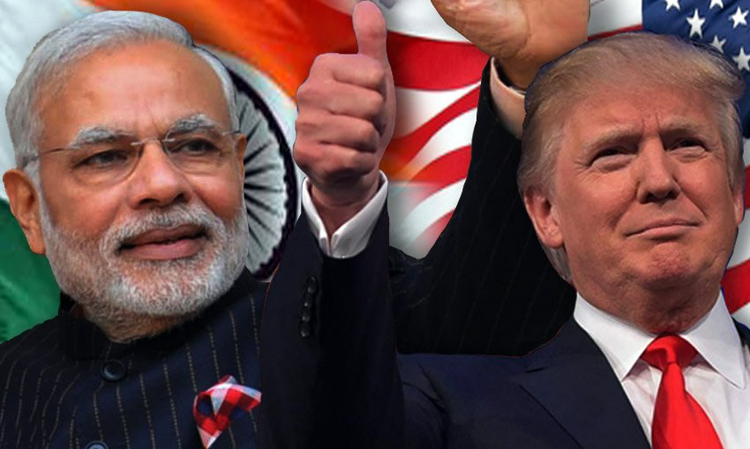INDIAN ARMED FORCES CHIEFS ON
OUR RELENTLESS AND FOCUSED PUBLISHING EFFORTS

SP Guide Publications puts forth a well compiled articulation of issues, pursuits and accomplishments of the Indian Army, over the years

I am confident that SP Guide Publications would continue to inform, inspire and influence.

My compliments to SP Guide Publications for informative and credible reportage on contemporary aerospace issues over the past six decades.
F-16 production in India – new beginning
 |
By Lt. General P.C. Katoch (Retd) Former Director General of Information Systems, Indian Army |


Lockheed Martin signed an agreement with India's Tata Advance Systems on June 19 to produce F-16 fighters in India, a week before Prime Minister Narendra Modi's meeting with US President Donald Trump. Lockheed Martin plans to shift its Fort Worth, Texas plant to India. Announcing the agreement at the Paris Air Show, Lockheed and Tata said, "F-16 production in India supports thousands of Lockheed Martin and F-16 supplier jobs in the US creates new manufacturing jobs in India, and positions Indian industry at the centre of the most extensive fighter aircraft supply ecosystem in the world." The statement about supporting "thousands of Lockheed Martin and F-16 supplier jobs in the US" is obviously to address the key result area of Donald Trump – jobs in the US. Trump would also weigh what such venture would contribute towards the Indo-US strategic partnership. Besides, Lockheed Martin would not have signed such an agreement without unofficial feelers to the Trump administration. The joint statement further adds, "This unprecedented F-16 production partnership between the world's largest defense contractor and India's premier industrial house provides India the opportunity to produce, operate and export F-16 Block 70 aircraft, the newest and most advanced version of the world's most successful, combat-proven multi-role fighter."
The F-16 Block 70 includes multiple capability upgrades, notably the advanced APG-83 AESA radar derived from the F-22 and F-35 technologies to leverage 5th generation fighter radar capabilities. The F-16 Block 70 also features advanced data link, targeting pod and weapons, precision GPS navigation and the Automatic Ground Collision Avoidance System (AUTO GCAS). It also has the new center pedestal display, which provides critical imagery to pilots on high-resolution six inches x eight inches screen. Lockheed Martin claims that structural modifications and capability upgrades enable the F-16 to fly 40 years into the future with leading edge combat capability. Significantly, Lockheed Martin's plan to move all future production from US to India, placing the Indian Aerospace industry at the centre of the most expensive fighter aircraft supply base. Of the over 4,500 F-16s manufactured over the years, with production lines in Europe and other countries like Turkey and South Korea apart from the US, around 3,200 are still flown by 26 countries, including Pakistan. Global demand for new production F-16 aircraft also remains strong in the Middle East, Eastern Europe, Southeast Asia and South America.
The IAF is presently operating with only 32 fighter squadrons against the requirement of 44 squadrons and some more squadrons are to be decommissioned next year. Besides, raising of the Tejas squadrons in required numbers is still long way off. Hundreds of fighter aircraft are needed to replace IAF's ageing fleet. With the strategic partnership model announced last month, the Modi government has already clarified that foreign suppliers would have to make the aircraft in India with a local partner to help build a domestic industrial base and cut outright imports. India has not opened formal bidding for the jet order, which is expected to be anything from 100 planes to 250. With the Lockheed Martin-" Advanced Systems JV, the F-16 is pitched against the Swedish Gripen-E fighter manufactured by Saab; both with single-engine fighter aircraft that the IAF want. Against the requirement of 126 x medium multi-role combat aircraft (MMRCA), only 36 French Rafale fighters have been purchased. There have been debates of the comparative capabilities between the F-16 and the FA/18 especially considering the weapon systems with our adversaries.
The debate will likely re-surface with the recent incident of a US FA/18 shooting down the SU-22 in Syria. But the FA/18 is a twin-engine aircraft and much more expensive than the F-16. Similarly, there is ongoing debate between what would suit the IAF better between the F-16 is and the Swedish Gripen-E fighter. According to some analysts, the Gripen-E is a shade better than the F-16. Significantly, the US itself has not ordered F-16s since 1999, shifting to the advanced fifth-generation F-35s, but has been exporting them to other countries. MoD has now stated that the "actual deal or contract" for the second assembly line is "still a long way off" since the process for the selecting the Indian private sector firm as the "strategic partner" for production of fighters will itself take "several months", which will be followed by the extensive bidding and negotiation process.Under the SP policy, foreign original equipment manufacturers (OEMs) will be selected in a parallel process. Saab is yet to announce its Indian partner. But our final choice will depend on multiple factors including costs and the geopolitical. Meanwhile it is uncertain if the high-powered delegation to Russia led by Defence Minister Arun Jaitley before Modi's US visit will ink the long-pending final R&D contract for the FGFA since issues of transfer of technology (ToT) and the cost-benefit analysis have still not been fully resolved.





